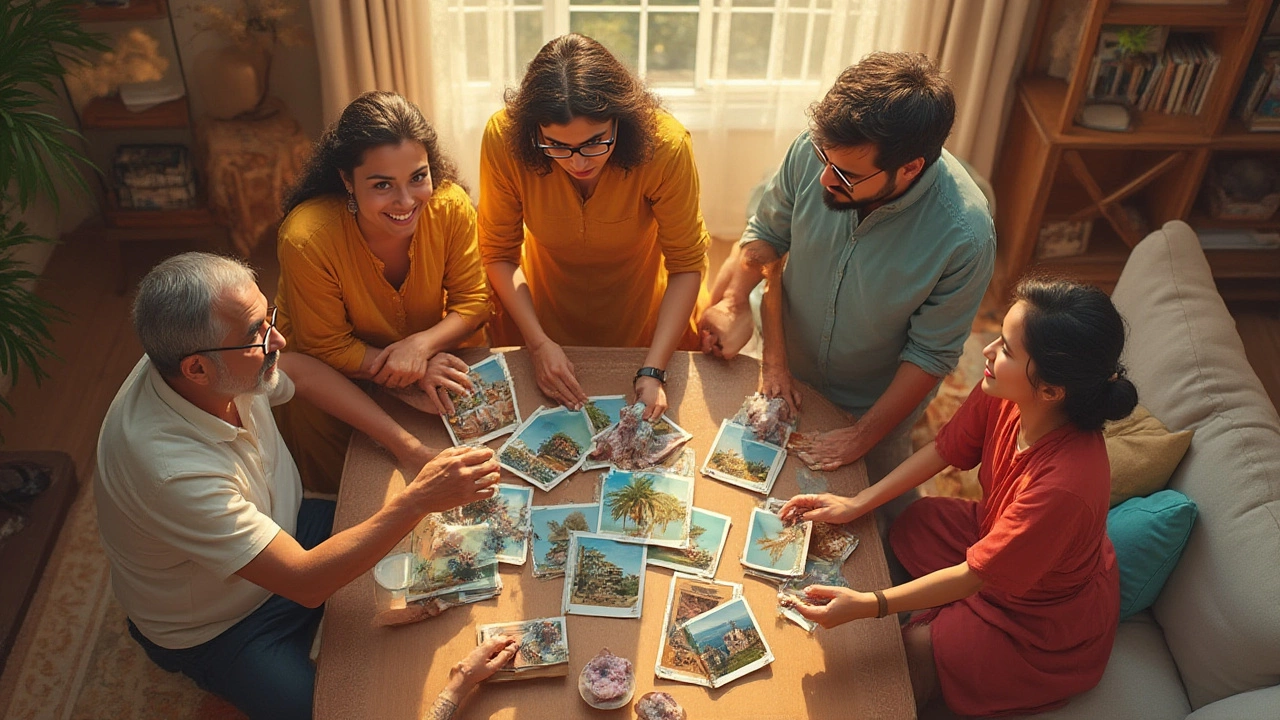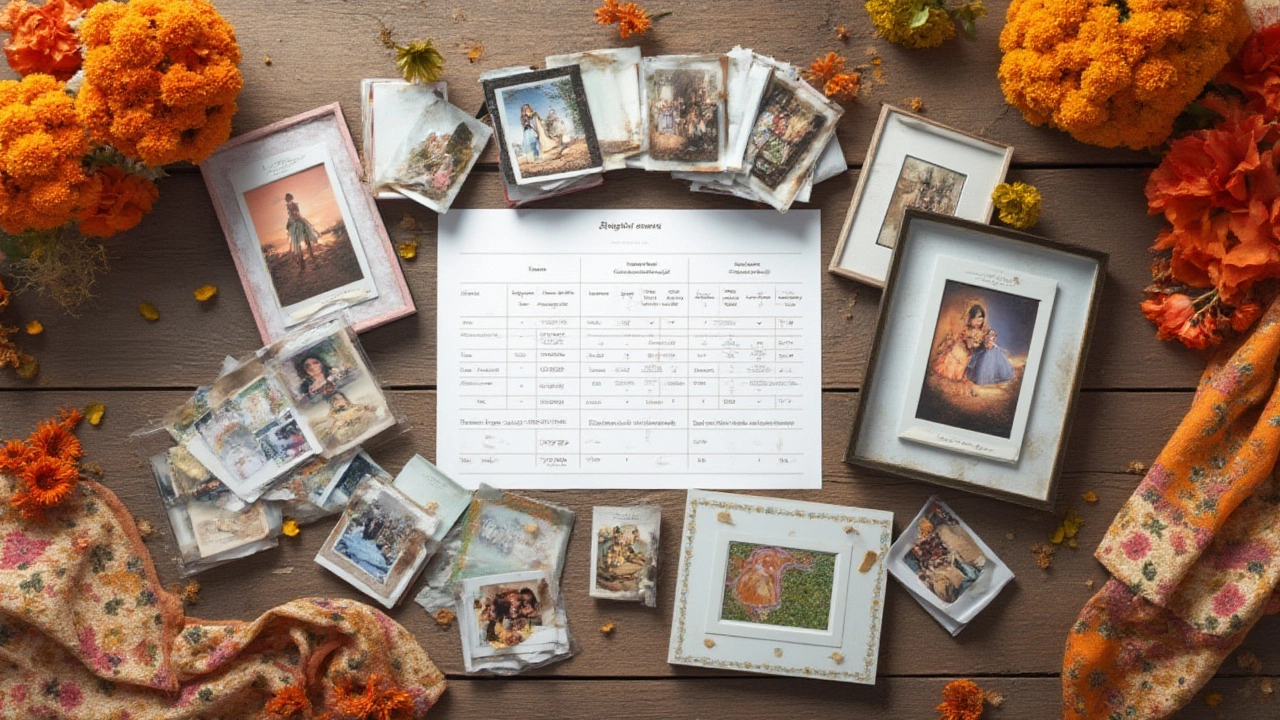Best Photo Prints: Top Stores Ranked for Quality, Price, and Convenience
 Jul, 5 2025
Jul, 5 2025
If you’ve ever stood in front of your fridge, holding a stack of freshly printed photos, you already know that not all prints are created equal. Some look so vibrant they practically pop off the paper, while others… well, they’re destined for the recycling bin. When it comes time to pick a store for photo prints—whether you’re framing vacation shots, making a sentimental gift, or filling up a photo album—the sheer number of options out there can feel like a jungle. Between old standbys like Walgreens and Walmart, trendy online shops, and specialty photo labs, it’s tough to separate hype from reality. Budget matters, but nobody wants to see their memories printed with the color skills of a bored raccoon. So, which store actually does the best job?
Comparing the Biggest Names: From Drugstores to Online Labs
If you ask regular folks where they get prints, most will mention one of the classic spots: Walgreens, CVS, Walmart, Target, or Costco. They’re easy to get to, often have same-day pickup, and run frequent deals. But walk through the process—from uploading the photo to opening up your order—and you’ll notice differences in sharpness, color accuracy, and even paper feel.
Best photo prints usually come from stores that treat your images with care. Walgreens, for example, is everywhere and will get you 4x6 prints in an hour. Their colors tend to be bright, but sometimes not true-to-life; reds might be a little cranked up, and shadows lose subtle details. Walmart is similar, but their prints run just a touch darker, with heavier contrast. CVS surprises some people. If you avoid in-store kiosks and order online for pickup, the quality tends to be better—less grain, more accurate skin tones, but there’s a risk: their paper can feel thin, and batches are sometimes inconsistent.
If you can wait a couple days, Costco has developed a fan following. Their prints are impressively sharp, the paper is thicker than average, and colors usually land just right—not too cool, not too warm. One tip: Costco switched its processing from chemical to dry lab printing (essentially, like a giant inkjet) a few years ago, so results might look a pinch softer. But for most people, it’s the best chain store option. The only catch? You’ll need a membership, although you can often order through a friend.
Then there are the specialty online labs. Shutterfly, Snapfish, Mpix, Nations Photo Lab, and Printique all deliver directly to your door. Shutterfly and Snapfish are almost always running a sale, which is great if you have a ton to print. Their website interfaces are simple, but the print quality can be hit-or-miss. Shutterfly’s prints sometimes skew orange; Snapfish can be ever-so-faintly green. Mpix, on the other hand, is what you want if you’re fussy—say, printing wedding or newborn shots. They use high-end Fujicolor Crystal Archive paper and maintain impressive color fidelity. Nations Photo Lab and Printique are in the same league, and their customer service actually treats you like a human. If your image matters, these companies deliver. Just watch your upload settings: always select full-resolution files, don’t let the software auto-enhance if you’ve already edited your photos, and double-check cropping.
Here’s another twist that’s often forgotten: not all stores offer true photo prints. Some use dye-sublimation or digital presses—translation: they feel more like stiff greeting cards, not glossy photographs. That’s fine for cheap enlargements, but they age poorly and can fade faster. If you’re looking to archive memories, check if the store uses traditional silver halide photo processing or professional inkjet prints. Usually, the fine print reveals what process is used.

Beyond Price: What Actually Matters for Photo Print Quality?
Let’s face it: everyone loves a deal. And when a store is advertising prints for nine cents each, it’s hard to resist the urge to print everything. But the cheapest isn’t always the smartest. The real things to watch are paper quality, color accuracy, and consistency. Some brands, like Mpix or Costco, aren’t always the lowest in price (usually somewhere between 15-30 cents per 4x6), but people notice the difference when they hold a print side by side with a bargain option.
Paper is a game changer. A thicker paper feels more expensive, warps less, and displays images better. Glossy finishes tend to make colors look brighter and more saturated, great for group shots or landscapes. Matte is less reflective, which is ideal for portraits you might frame behind glass. Some stores, like Printique, even offer deep matte or metallic finishes—nice if you want to experiment.
Color accuracy often comes down to how well the lab is calibrated. A professional lab will print exactly what you see on a tuned monitor, but most standard stores give colors a blanket boost, making everything look a bit more "poppy." That’s fine for social pics but might annoy anyone photographing subtle or artistic scenes. You might notice highlights get blown out or shadows lose detail. An insider trick: soft-proof your images if you can, using the printer’s color profile, to prevent weird shifts.
Print consistency matters most when you’re ordering multiples. Have you ever ordered a bunch of the same shot, only to find the first two look good and the rest look like they took a dip in the pool? This happens when a store doesn’t keep their printers in top shape or switches paper stock to save money. Mpix and Nations Photo Lab keep their printers in precise working order; the chain stores are a little iffier. If you get a dud batch, don’t be shy—most stores will reprint if you reach out.
Aspect ratio is the secret reason why some of your favorite Instagram or phone pics get awkwardly cropped. Standard prints like 4x6 use a 3:2 ratio, which doesn’t always match the 4:3 or wider formats shot on a phone or DSLR. Before you click order, always review the cropping tool each store provides. You might need to tweak your photo so nobody gets a haircut mid-forehead.
If you’re printing something large—an 8x10 or poster—never use a low-res version. Zoom in to 100% and look for blur or pixelation. Most labs will warn you, but some chain stores will just print whatever you send, blurry or not.

Tips for Getting Photo Prints You’ll Actually Love
Once you’ve picked a store, a few simple tricks can turn an okay order into something you’ll want to show off. Start with your files. Always use the highest-resolution version you have—avoid screenshots or compressed copies. If you edit your photos (bring out a little detail, brighten up a dark shot), try not to go overboard. Super vivid images might come out cartoonish when printed; a gentle hand usually gives the most natural results.
Don’t trust every screen. The colors and brightness you see on your phone or laptop can be miles away from what actually prints. Screens are often set to max brightness by default, which makes dark photos look just right—until they print way too dark. Bump up the brightness just a touch before uploading. For the perfectionists: there are cheap calibration tools on Amazon that let you tweak your screen for print accuracy, but most people get by with a test print or two.
Ordering online? If you’re new to a service, order just a handful of prints the first time—even if the price is tempting. Stores like Shutterfly and Snapfish regularly mail out coupon codes for free or heavily discounted prints. Sign up for their newsletters and watch for holiday deals.
Packing matters if you’re getting prints delivered. Specialty labs usually wrap orders in sturdy envelopes or even boxes; chain stores sometimes use thin packaging that can bend in the mail. If it matters, splurge for tracked shipping or pickup in person rather than risking a wrinkled print. And if your prints arrive damaged or off-color? Good labs like Mpix or Printique almost always offer a hassle-free reprint—they want you coming back.
For something special, try out unique offerings—metal prints, canvases, wood blocks, even retro Polaroid looks. Printique and Nations Photo Lab excel here. Just know these options can take a week or more and cost several times the price of basic prints. They’re brilliant for gifts or statement pieces, though.
One last thing: keep your original files, especially if you’re ordering enlargements or plan to reprint in the future. Don’t trust social media versions, as sites like Facebook compress images tightly and lose detail. For safekeeping, back up your best shots to at least two places—the cloud and an external drive. That way, you can always print again if inspiration (or disaster) strikes.
So, where should you send your next batch of photos? If you need fast, cheap, and decent, give Costco or Walgreens a spin. If you want to impress, spring for Mpix, Printique, or Nations Photo Lab. The sweet spot is sometimes a mix: cheap for your daily snaps, premium for the moments you’ll hang on the wall. Trust your eyes and your gut, and you’ll find a favorite in no time.